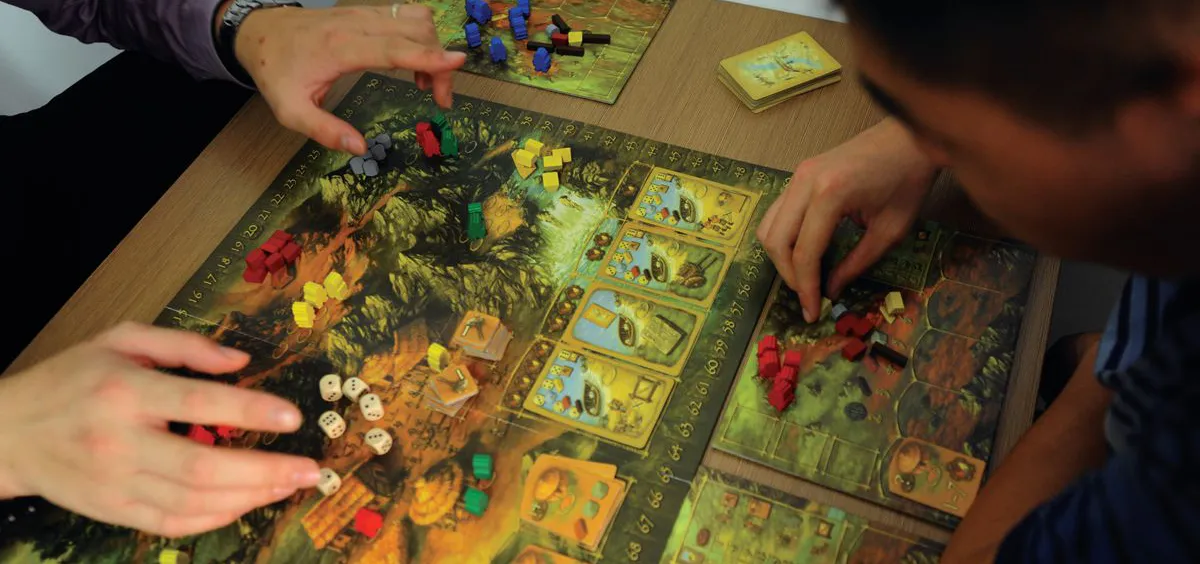Tabletop gamers gather weekly in bars to strategize—and “slay” each other
For around 150,000 internet users of the “Tabletop Game Bar” on Baidu Tieba, “killing time” has a different meaning than usual.
Congregating online to talk strategy and swap recommendations during the week, on the weekend, these aficionados gather in their thousands at professional “tabletop game bars” around the country for fun and socializing, based on strategy and roleplay—and pretend killing.
Though tabletop games such as Dungeons and Dragons began to arrive in the 1980s, the first real “gaming fever”— based on a homegrown product—took place in 2010 with Sanguosha (三国杀, “Three Kingdoms Kill”), a re-interpretation of the party game Bang! with characters from the classic Chinese novel. At its peak, the Sanguosha market was worth than 40 million RMB, and attracted tens of millions of players, along with literary copycats like “Red Mansions Kill,” and “Journey to the West Kill” at new gaming bars in every city—around 70 to 80 percent of which collapsed when the bubble burst just a year later.
Experts worry that this pattern will repeat: Last year saw the overnight rise of Langrensha (狼人杀, “Werewolf Kill”), or The Werewolves of Millers Hollow, the French adaptation of the party game Mafia. Though board-game bars are once again opening in malls and residential districts, China’s new killing fever is being helped by a matured fan base and multimedia products, such as live streaming and mobile apps.
Lying Man, a variety show now in its seventh season, streams episodes on Zhanqi TV featuring celebrity guests playing tabletop games, of which Langrensha is a perennial favorite. More than 40 free Langrensha apps and mobile games are on the market, helping to support an offline market valued at five billion RMB.
China’s tabletop game industry still struggles with its brief history, though, compared to Western societies, where nostalgia for family games like Monopoly has created a market worth 96 billion USD. Chinese millennials “can only play tabletop games with their peers,” game designer He Min told Jiemian News, “though that makes them value its social aspects more.” In China, in fact, board games are associated with rebellion against traditional amusements: “I don’t want to do KTV…or play cards, so there’s only tabletop games left,” one student told Jiemian.
Zhao Yong, founder of the DICE CON tabletop conference, explained that, to avoid another crash, the next step for China’s gaming industry is to create an original product. In 2016, nicknamed “Year 1 of Chinese game design,” 33 product pitches received around three million RMB’s worth of investments; in 2013, there were just three. In 2017, the marketing team of Chinese animated film Dahufa partnered with a gaming bar to release a Dahufa version on the Chinese game Animals Frightening Night!, linking two domestic industries that long suffered a paucity of original, high-quality products.
“Though Sanguosha is over, lots of players became experts or even tabletop game entrepreneurs,” Zhao says. “If Sanguosha took [an interest in gaming] from one to 10, then Langrensha is taking it up to 100.”
Board to Death is a story from our issue, “Modern Family.” To read the entire issue, become a subscriber and receive the full magazine.












